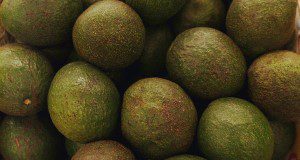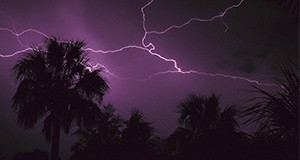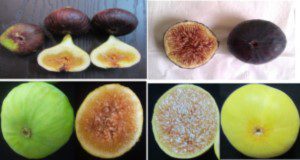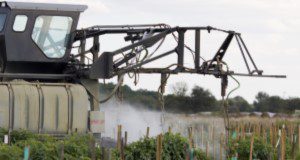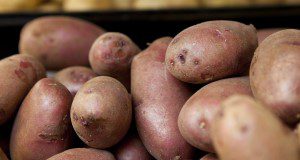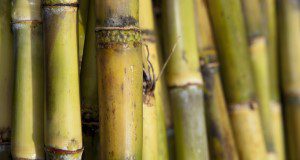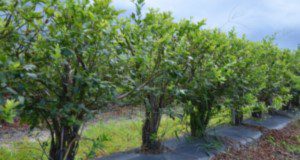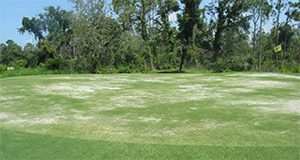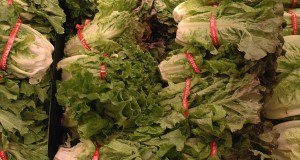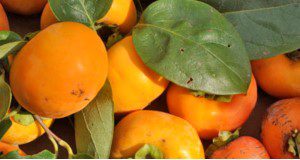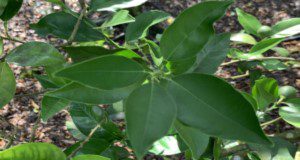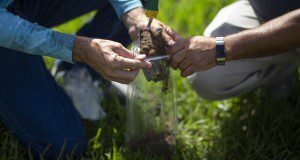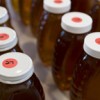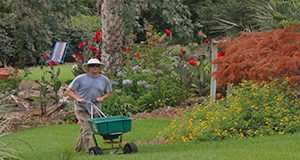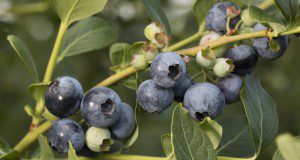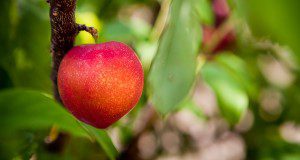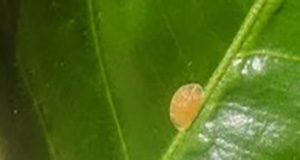The lethal laurel wilt epidemic affecting avocado trees in Florida is caused by a fungal pathogen-ambrosia beetle complex (LW-AB). The death of over 120,000 commercial avocado trees in Florida may be attributed to LW-AB. Recommendations for control and mitigation of this epidemic are needed to guide commercial producers in their decision-making process. This new 8-page publication of the UF/IFAS Horticultural Sciences Department outlines the LW-AB epidemic, provides information on the pathogen and ambrosia beetle vectors, provides a brief outline of current research findings, and offers recommendations for the control and mitigation of LW-AB. Written by Jonathan H. Crane, Daniel Carrillo, Edward A. Evans, Romina Gazis, Bruce Schaffer, Fredy Ballen, and Jeff Wasielewski.
https://edis.ifas.ufl.edu/hs1360
Category: Agriculture
Harmonizing the Assessment of the Impacts of Natural Disasters to Florida Agriculture
UF/IFAS Extension has developed an online survey instrument to improve collection of data on losses to Florida agricultural businesses following disasters and to assist agricultural stakeholders in times of disaster. Florida’s agricultural sector frequently experiences substantial adverse impacts during and after natural disasters. Depending on the size and scope of the disaster, agricultural business owners and employees could suffer reduced earnings, financial insecurity, and social stress, and consumers could experience temporary food insecurity. Timely provision of credible estimates of agricultural losses after a disaster is critical to an official disaster declaration and to timely provision of disaster relief and recovery, but collecting data on agricultural losses can present challenges. This 15-page fact sheet written by Christa Court, Alan Hodges, and Matt Lollar and published by the UF/IFAS Food and Resource Economics Department describes the online survey instrument, explains how to use it, and communicates how the data collected will be used in analyses of economic losses.
https://edis.ifas.ufl.edu/fe1075
El higo
El higo (Ficus carica L; familia Moracea) se originó en los trópicos del Viejo Mundo: Asia Menor y la Región Mediterránea. En el Mediterráneo, el higo se ha cultivado desde el año 5,000 a.C. Muchos cultivares de higos fueron importados del Viejo Mundo en los últimos 50 años. Actualmente, sin embargo, no hay programas de mejoramiento de higos en los Estados Unidos, y de entre al menos 60-100 cultivares de higos nombrados, relativamente pocos se cultivan en el sureste de los Estados Unidos.
This is the Spanish version of HS27, The Fig. (https://edis.ifas.ufl.edu/mg214). Written by Ali Sarkhosh and Peter C. Andersen, translated by Luis Jonathan Clavijo Herrera, and published by the UF/IFAS Horticultural Sciences Department.
https://edis.ifas.ufl.edu/mg459
Tank-Mixing Pesticides without Disasters
Tank-mixing several pesticides is a common practice in conducting pest control. Tank mixes can consist of much more than just pesticides, such as fertilizers, micronutrients, and adjuvants. However, applicators must be aware of potential problems given that there are so many potential combinations when combining these products. Manufacturers cannot possibly test for all of these combinations, so both chemical and physical incompatibility are a concern with the practice. This new 4-page document, written by Frederick M. Fishel and published by the UF/IFAS Pesticide Information Office, describes some common-sense practices to help overcome costly tank-mixing errors.
https://edis.ifas.ufl.edu/pi285
Fertigation via Center Pivot Irrigation for Commercial Potato Production in Florida
Potatoes are an important crop in the United States, and Florida is ranked the 7th producer nationwide for potato production. In Florida, potatoes are mainly planted on sandy soils with low nutrient- and water-holding capacities. Nitrogen is the most limiting nutrient in these soils. Adopting efficient fertilization methods such as fertigation is imperative for minimizing leaching and improving use efficiency of nitrogen. This new 12-page article provides step-by-step guidelines for fertigation practices for commercial potato production. Written by Xiangju Fu, Guodong Liu, Lincoln Zotarelli, Steven Sargent, Kati Migliaccio, and Yuncong Li, and published by the UF/IFAS Horticultural Sciences Department.
https://edis.ifas.ufl.edu/hs1361
Soil Organic Matter Impacts on Sugarcane Production on Florida Mineral Soils
Sugarcane growth on mineral soils in Florida can often be highly variable as related to the nature of the soils. The soil factor that best relates to sugarcane growth is soil organic matter content. Very stunted sugarcane is also associated with high nematode populations, which indicate high risk of crop damage. This new 4-page publication of the UF/IFAS Agronomy Department discusses grower options for evaluating and increasing soil organic matter. Written by J. Mabry McCray and Stewart Swanson.
https://edis.ifas.ufl.edu/ag441
Pruning Southern Highbush Blueberry in Florida
Pruning is an essential part of blueberry production and is used to help establish new plantings; promote postharvest growth of new foliage and fruiting wood; balance vegetative and reproductive growth; reduce disease and certain insect pressure; assist in harvesting efficiency; and promote new cane growth and plant longevity. This new 3-page publication of the UF/IFAS Horticultural Sciences Department is a discussion of pruning practices on southern highbush blueberry in Florida. Written by Douglas A. Phillips and Jeffrey G. Williamson.
https://edis.ifas.ufl.edu/hs1359
An Overview of the Grapefruit Market in France
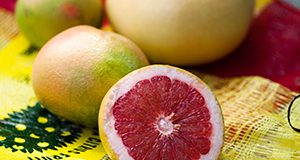
The authors of this 4-page fact sheet, Yan Heng, Mitzey Tejeda, and Lisa House, used a national survey to analyze and understand French consumer preferences and consumption behavior regarding grapefruit. They found that more than half of the respondents were willing to purchase grapefruit in the upcoming year, suggesting that French consumers hold an overall positive image of grapefruit. As a major and well-recognized supplier providing high-quality products, Florida has the opportunity to continue producing and exporting grapefruit to France. Published by the UF/IFAS Food and Resource Economics Department.
https://edis.ifas.ufl.edu/fe1072
Timber Inventory: A Primer for Landowners
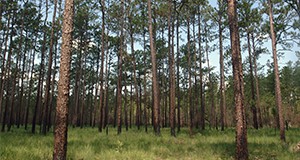
This 7-page fact sheet written by John Dooner and Michael Andreu and published by the UF/IFAS School of Forest Resources and Conservation outlines a process called timber cruising, surveying timber inventory to estimate the current volume and value of a timber stand. The authors explain the process of timber cruising from initial tree-level measurements to the final total stand-level estimates and various methods for conducting the cruise.
https://edis.ifas.ufl.edu/fr426
Non-Fumigant Nematicides Registered for Vegetable Crop Use
Non-fumigant nematicides are formulated as liquids or granules that are moved through the soil by water. This 4-page fact sheet written by T. T. Watson and J. A. Desaeger and published by the UF/IFAS Entomology and Nematology Department is a major revision. It was first published in 1999 and most recently revised in Aoril 2019. The fact sheet lists and describes chemical and biological non-fumigant nematicides and provides some information about how these products work against nematode pests.
https://edis.ifas.ufl.edu/ng033
Lettuce Cultivars Suitable for Use on Organic Soils in Southern Florida
Lettuce as a commercial crop is planted mainly in organic soils (“muck”) in the Everglades Agricultural Area (EAA) in south Florida. This updated 6-page publication of the UF/IFAS Horticultural Sciences Department presents a summary of previous cultivar releases by UF/IFAS as well as a description of cultivars currently planted in the EAA. Written by German Sandoya and Huangjun Lu.
https://edis.ifas.ufl.edu/hs1225
Japanese Persimmon Varieties in Florida
Japanese persimmons were first grown in Florida in the 1870s, but as of 2017, most US plantings are on a small scale; however, even as the overall acreage has decreased, the number of farms in Florida growing the fruit increased from 2012 to 2017. Trees grow and fruit best in central and northern Florida and can produce high yields of good-quality fruit. With an estimated population of more than 21 million, a diverse cultural base, and large cities close to production zones, Florida is primed for a larger persimmon industry. This 11-page revision provides growers with a primer on persimmon characteristics, marketing, and cultivars. Written by Ali Sarkhosh, Peter C. Andersen, and Dustin M. Huff, and published by the UF/IFAS Horticultural Sciences Department.
https://edis.ifas.ufl.edu/mg242
Citrus Leaf Sampling Procedures for Nutrient Analysis
To maintain balanced nutrients for optimal tree growth, citrus growers need to assess trees’ nutritional requirements. These assessments help prevent any nutrient deficiency or toxicity from compromising tree health and yield or reducing revenue. This new illustrated two-page instructional sheet gives a basic procedure for the citrus leaf sampling process, as well as additional suggestions for HLB-affected trees. Written by Tripti Vashisth, Jamie D. Burrow, Davie Kadyampakeni, and Rhuanito S. Ferrarezi, and published by the UF/IFAS Horticultural Sciences Department.
https://edis.ifas.ufl.edu/hs1355
Soil Sampling Procedures
To achieve optimal grove nutrition, citrus growers must test grove soil before beginning any fertilization program. Standard procedures for sampling, preparing, and analyzing soil should be followed for meaningful interpretations of the test results and accurate recommendations. This new two-page fact sheet, published by the UF/IFAS Department of Soil and Water Sciences, provides illustrated soil sampling procedures and tables to aid in basic interpretation of lab results. Written by Davie Kadyampakeni, Kelly Morgan, Arnold Schumann, and Rhuanito S. Ferrarezi.
https://edis.ifas.ufl.edu/ss667
Bottling, Labeling, and Selling Honey in Florida
Honey producers in Florida have two main avenues for selling their hive products. Larger operations must be properly permitted by the Florida Department of Agriculture and Consumer Services and must bottle honey in a certified food establishment. Smaller-scale honey producers, however, may be exempt from needing these licenses, under Florida’s cottage food laws. This 4-page fact sheet written by Nancy Gentry, James D. Ellis, and Mary Bammer and published by the UF/IFAS Entomology and Nematology Department discusses the laws regarding bottling, labeling, and selling honey in Florida both under and outside of the cottage food laws.
http://edis.ifas.ufl.edu/in918
Urban Fertilizer Ordinances in the Context of Environmental Horticulture and Water Quality Extension Programs: Frequently Asked Questions
Excess nitrogen (N) and phosphorus (P) in water bodies are a leading cause of water quality degradation statewide. More than 50 Florida counties and municipalities now have formal fertilizer ordinances, which in some cases include fertilizer blackouts, or bans on the usage of N and P fertilizers during certain times of the year. This 8-page document provides information on the underlying issues of fertilizer use, with an emphasis on an urban setting, and outlines the current state of the science on urban fertilizers and water quality in Florida. Written by Michael D. Dukes, Lisa Krimsky, Mary Lusk, Laurie Trenholm, Bryan Unruh, Michelle Atkinson, and Rao Mylavarapu, and published by the UF/IFAS Department of Agricultural and Biological Engineering, February 2020.
https://edis.ifas.ufl.edu/ae534
Nutrition and Fertilization Practices for Southern Highbush Blueberry in Florida
Research and field experience have demonstrated that fertilization is necessary to achieve proper growth and high yields in cultivated production of blueberries. This new 7-page publication of the UF/IFAS Horticultural Sciences Department provides guidance and management suggestions to Florida growers of southern highbush blueberry (SHB) for monitoring, supplying, and maintaining proper plant nutrition in commercial production operations. Written by Doug Phillips and Jeffrey G. Williamson.
https://edis.ifas.ufl.edu/hs1356
Peach Brown Rot
Brown rot, caused by Monilinia spp., is one of the most economically harmful fungal diseases for peach and other stone fruit growers worldwide. Under the right conditions, the entire tree’s crop can be completely rotted. Fruit susceptibility fluctuates with the various stages of development; mature fruits are highly susceptible to disease, and fruit infection has the greatest impact on production. This new 7-page publication of the UF/IFAS Horticultural Sciences Department describes the disease cycle, symptoms, and management options available for brown rot in Florida peaches. Written by Ali Sarkhosh, Shirin Shahkoomahally, Logan Marie Richmond-Cosie, and Philip Harmon.
https://edis.ifas.ufl.edu/hs1357
Citrus Pest Quick Guide: Brown Soft Scale (Coccus hesperidum Linnaeus)
A one-page quick guide written by Lauren M. Diepenbrock and Jamie D. Burrow and published by the Entomology and Nematology Department presents the life cycle of brown soft scale and provides several photos of the pest and the damage it causes to assist in identification.
https://edis.ifas.ufl.edu/in1252
Does Eco-label Format Influence Consumers’ Valuation of Fruit-Producing Plants?
Consumer demand for environmentally friendly products has increased, and consumers are willing to pay more for environmentally friendly fruit-producing plants. With the increased demand, however, the number and variety of eco-labels describing the environmentally friendly qualities of plants has also increased, which could confuse consumers and decrease label effectiveness. Previous studies found that well-designed eco-labels improve consumer understanding, clarity, and choice. This 6-page fact sheet written by Hayk Khachatryan, Alicia Rihn, and Xuan Wei and published by the UF/IFAS Food and Resource Economics Department summarizes a study that addressed how different eco-label formats (text vs. logo) impact consumer visual attention, preferences, and valuations of fruit-producing plants.
https://edis.ifas.ufl.edu/fe1074
